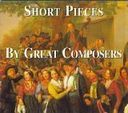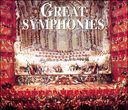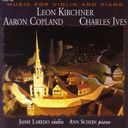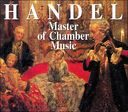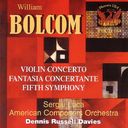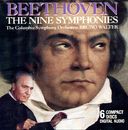Howard Shelley Romantic Piano Concerto Vol 74
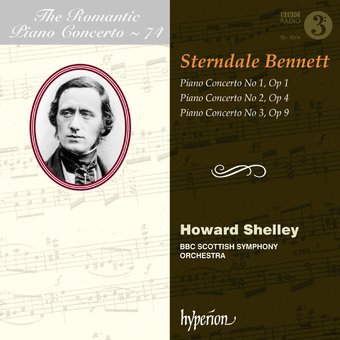
| Price: | $18 |
| List Price: |
|
| You Save: | $1.98 (10% Off) |
|
Brand New
|
CD Details
- Released: March 2, 2018
- Originally Released: 2018
- Label: Hyperion
Tracks:
- 1.Howard Shelley & BBC Scottish Symphony OrchestraPiano Concerto No. 1 in D Minor, Op. 1: I. Allegro con brio
- 2.Howard Shelley & BBC Scottish Symphony OrchestraPiano Concerto No. 1 in D Minor, Op. 1: II. Andante sostenuto
- 3.Howard Shelley & BBC Scottish Symphony OrchestraPiano Concerto No. 1 in D Minor, Op. 1: III. Presto: Scherzo
- 4.Howard Shelley & BBC Scottish Symphony OrchestraPiano Concerto No. 2 in E-Flat Major, Op. 4: I. Allegro moderato
- 5.Howard Shelley & BBC Scottish Symphony OrchestraPiano Concerto No. 2 in E-Flat Major, Op. 4: II. Fantasia: Adagio quasi espressivo
- 6.Howard Shelley & BBC Scottish Symphony OrchestraPiano Concerto No. 2 in E-Flat Major, Op. 4: III. Vivace giocoso
- 7.Howard Shelley & BBC Scottish Symphony OrchestraPiano Concerto No. 3 in C Minor, Op. 9: I. Allegro moderato
- 8.Howard Shelley & BBC Scottish Symphony OrchestraPiano Concerto No. 3 in C Minor, Op. 9: II. Romanza: Andante
- 9.Howard Shelley & BBC Scottish Symphony OrchestraPiano Concerto No. 3 in C Minor, Op. 9: III. Allegro agitato
Product Description:
The model for Bennetts piano concertos has often been given as Mozart. In some ways this is not surprising. Bennett greatly admired Mozart; there are numerous stylistic elements of his music which point to Mozartian influence; and Bennett was himself a keen executant of Mozarts piano concertos which, during the 1830s, were performed more frequently than they had been in the years after their composers death. Nevertheless, the paradigm for the opening movement of Bennetts first piano concerto was not Mozart but the prevailing tendency of the London Piano School, many of whose most earnest exponents, such as Cramer, Moscheles and Potter, taught at the RAM. Smaller than the ritornello of Mozarts K466 in D minor, the opening orchestral introduction lasts only sixty-five bars, yet Bennett cleaved to the process of two distinct thematic ideas, with a third providing the coda material. The first idea, in D minor, is, as Geoffrey Bush has remarked, the D minor of Don Giovanni, and the bold gesture of the I-Vb progression that opens Bennetts ritornello is clearly reminiscent of the initial dramatic bars of Mozarts overture to his opera. In fact, Bennett seems to have exercised an obsession with D minor at this point in his education. His second symphony (WO23)which also shows symptoms of Don Giovanni and which was composed at much the same time as the first concertouses the same key for its outer movements, as does an overture (WO24) composed in October 1833. It also seems more than a coincidence that Cipriani Potters first surviving piano concerto, completed only two months after Bennetts work in December 1832 (and recorded on volume 72 of this series), should have been written in the same key. While the Don Giovanni idea dominates the first thirty bars of Bennetts ritornello, the second phase is taken up with a presentation of the second subject in F major. This entirely Classical idea, with its regular periodic structure, is firmly rooted in the relative major and it is only with a repetition of the melody that Bennett redirects the tonality back to D minor in preparation for the entry of the piano. At this juncture there is an unexpected interjection of the Neapolitan. Mozarts predilection for this chromatic inflection is well known, and Bennetts dramatic use of the harmony was probably a respectful gesture, but it could also have been down to Potters influence: a similar Neapolitan flourish (albeit more cadenza-like) occurs at the same point in the first movement of his own concerto in D minor. The presentation of Bennetts second subject also follows a traditional London procedure in that, after the statement of the lyrical material, a secondary phase gives rise to an exhibition of virtuoso technique from the soloist. This strategic thinkingimpressive for one so youngis continued in the recapitulation where the reprise of the first subject is taken entirely by the orchestra, thus throwing the restatement of the second subject in the tonic major into relief with the arrival of the piano.
The tripartite second movement, andante sostenuto, owes much to the simplicity and lyrical effusion of John Fields slow movements, especially the chamber-music idiom of the more nocturne-like central section with its solo wind instruments. The anomaly of ending with a ternary scherzo suggests that Bennett originally planned an innovative four movements for his concerto but was persuaded to drop the finale. The Capriccio in D minor, Op 2, for solo piano, composed (according to his RAM student colleague George Macfarren) in early 1834 and dedicated to Potter, may well have been the original last movement.
In his Piano Concerto No 2 in E flat major, Op 4, composed between July and November 1833 and dedicated to Potter, there is a clearly a greater expression of new-found self-assurance. Bennett performed it three times at the RAM in 1834 alone and it was with this work that he made his soloist debut at the Philharmonic Society on 11 May 1835. Bennett also revived it in February 1838 for another London concert and other pianists such as Calkin and Dorrell gave performances in the capital in 1839 and 1842. The opening orchestral ritornello of the second concerto may still radiate the composers love of Mozart, but the sense of scale (125 bars) is clearly much more ambitious as is evident from the larger proportions of the sonata movement, the level of thematic invention (which embraces Bach as well as Mozart and Beethoven), and the much greater technical demands Bennett makes in the solo part. In the same manner as the first concerto, Bennett reserves the first subject of the recapitulation (a substantial passage of some thirty bars) for the orchestra alone, leaving the lyrical second subject and the immensely demanding bravura material that follows to the piano.
The adagio quasi espressivo is thematically tauter in its monothematic objectives, particularly in the way the central paragraph not only transforms the initial melody into a more severe contrapuntal invention but also, by dint of its tonal instability, functions as a developmental phase. As if to intensify this entirely romantic sense of transformation, Bennett interru























